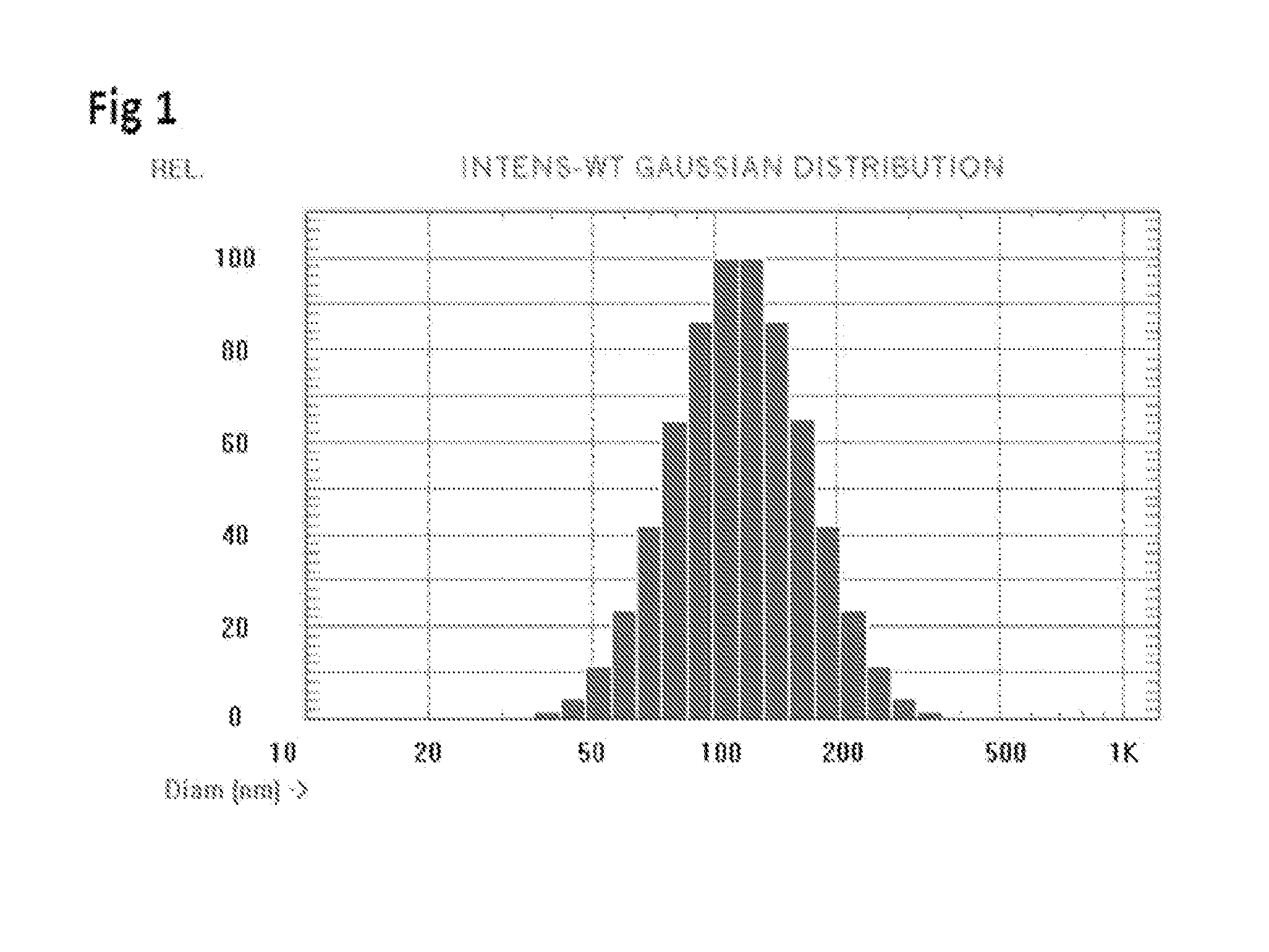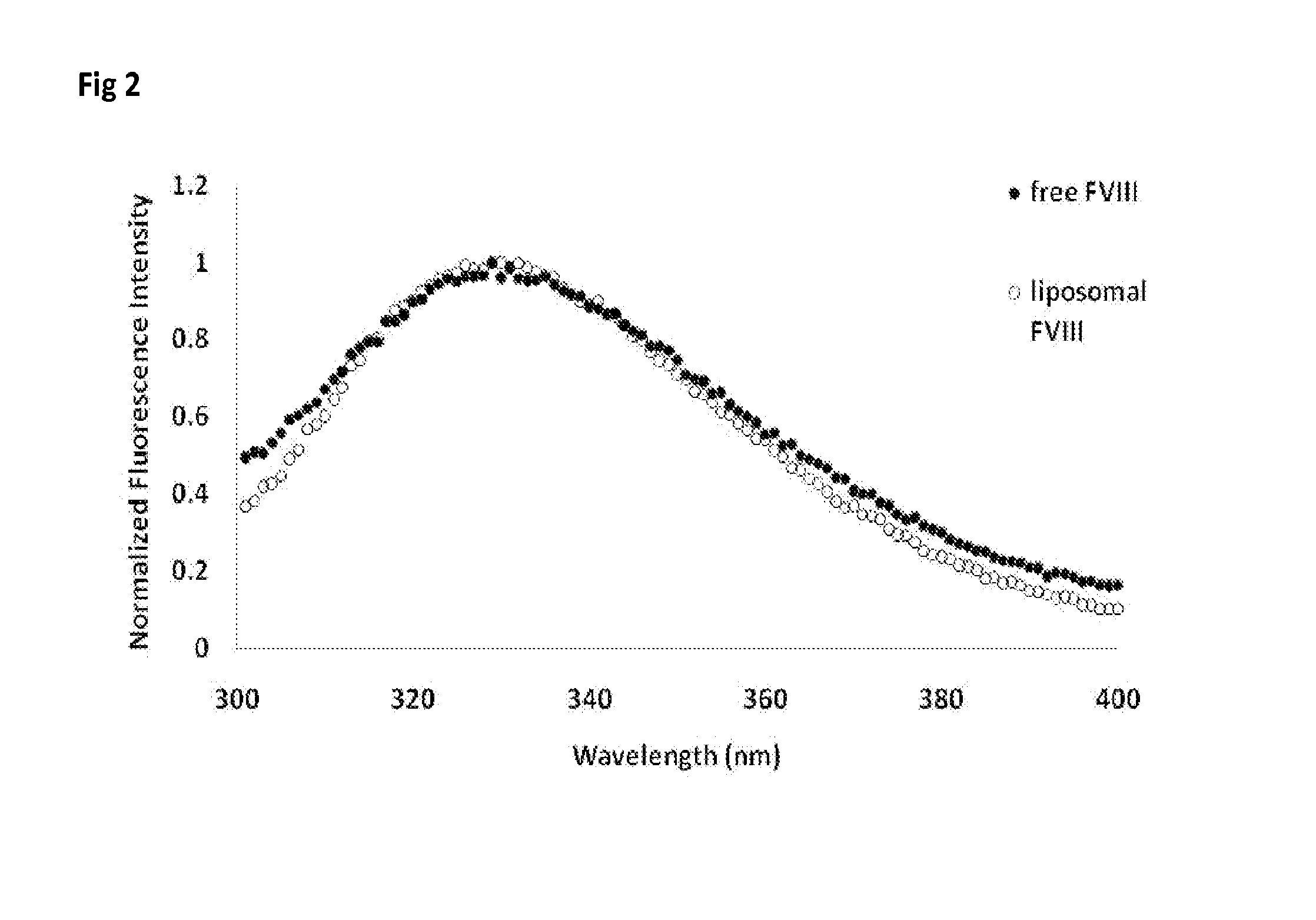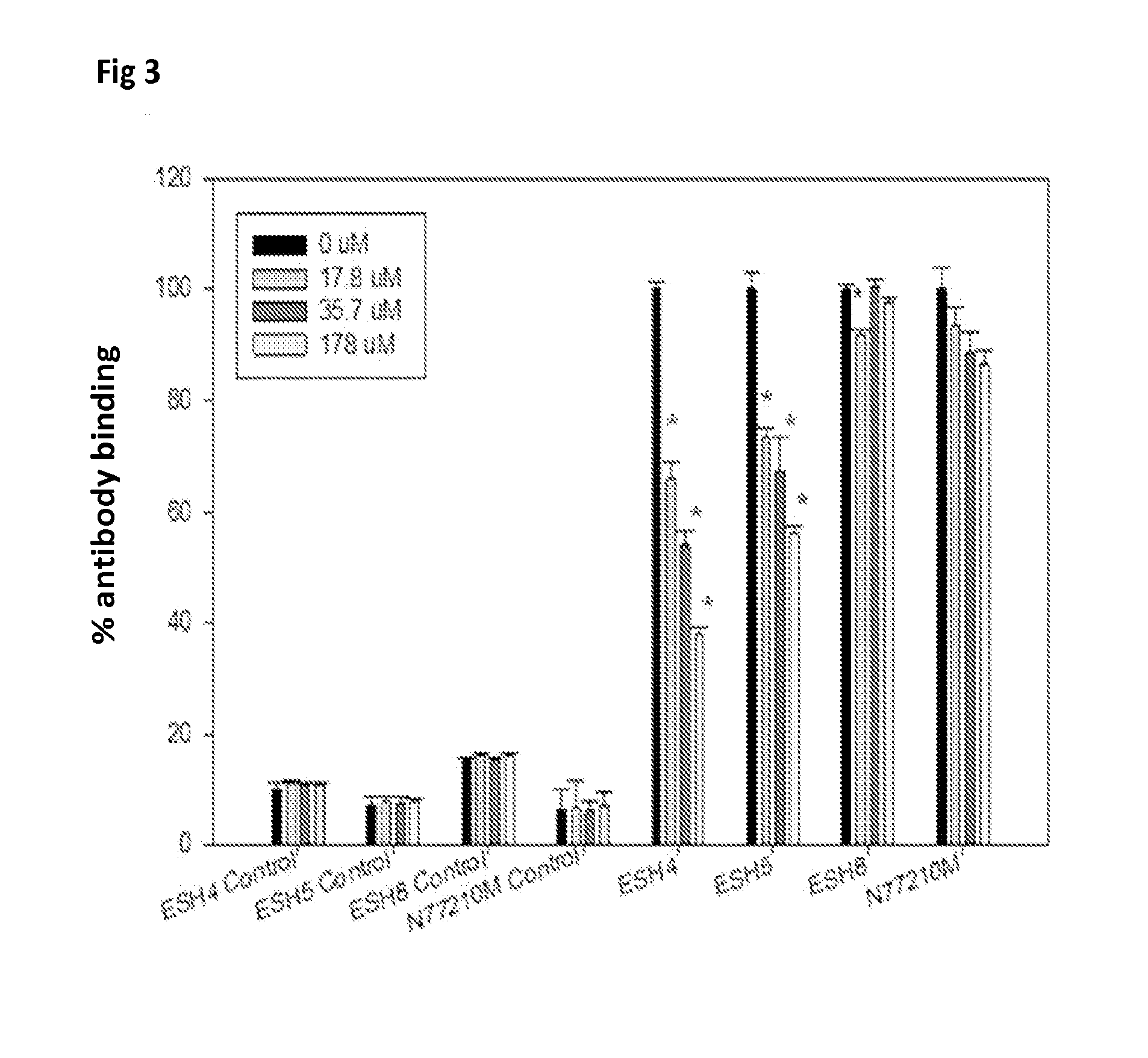Compositions and methods for immune tolerance induction
- Summary
- Abstract
- Description
- Claims
- Application Information
AI Technical Summary
Benefits of technology
Problems solved by technology
Method used
Image
Examples
example 1
[0039]Materials: Full length recombinant human FVIII (Baxter Biosciences, Carlsbad, Calif.) was obtained as a gift from the Western New York Hemophilia Foundation. Brain PS, soy-bean derived PI and DMPC were purchased from Avanti Polar Lipids (Alabaster, Ala.). The lipids were dissolved in chloroform, aliquoted to the appropriate concentration, stored at −80° C. and used without additional purification. All solvents and components for the buffers were obtained from Fisher Scientific (Fairlawn, N.J.) or from Sigma (St. Louis, Mo.) and were used without further purification. Laurdan was purchased from Molecular Probes Inc. (Eugene, Oreg.). Anti-FVIII monoclonal antibodies ESH4, ESH5 and ESH8 were obtained from American Diagnostica Inc. (Greenwich, Conn.) while the antibody N77210M was purchased from Biodesign International (Saco, Me.). Goat anti-mouse Ig and rabbit anti-rat Ig conjugated to alkaline phosphatase were purchased from Southern Biotechnology Associates, Inc. (Birmingham, A...
example 2
[0073]ACD, acid citrate dextrose; APC, antigen presenting cell; aPTT, activated partial thromboplastin time; BSA, bovine serum albumin; DC, dendritic cell; DMPC, dimyristoyl phosphatidylcholine; ELISA, enzyme-linked immunosorbent assay; FVIII, factor VIII; GPEx, excitation generalized polarization; IV, intravenous; MLVs, multilamellar vesicles; PB, phosphate buffer; PBT, Tween 20 containing phosphate buffer; PEG, polyethylene glycol; PI, phosphatidylinositol; PS, phosphatidylserine; PSF, plate specific factor; RES, reticuloendothelial system; SC, subcutaneous; SR, solvent relaxation; SUVs, small unilamellar vesicles; Tc, transition temperature; TH cells, T-helper cells; Treg cells, regulatory T cells; Trp, tryptophan; vWF, von Willebrand Factor; HA, Hemophilia A.
[0074]Factor VIII (FVIII) is a 280 KDa, multidomain glycoprotein synthesized predominantly in the liver. It is made up of a light chain and a heavy chain, held together non-covalently by a divalent cation. Full length FVIII ...
example 3
[0088]This example describes the preparation of liposome complexes with another protein, acid α-glucosidase (GAA) peptide 340-352, which has previously been shown to be the most prominent of three T-cell epitopes involved in the immune response to intravenously administered recombinant human GAA (rhGAA). The peptide was associated with a phosphatidylserine (PS) liposome to tolerize GAA knockout mice and could be replaced with GAA or lipidic GAA. This GAA peptide is 13 amino acids long containing amino acids 339-352 of the GAA sequence. The tryptophan residue at position 339 was added to the T-cell epitope sequence found by Nayak et al. (Molecular Genetics and Metabolism 2012, 106 (2), 189-195) in order for us to detect the peptide by fluorescence. PS liposomes containing this peptide were prepared as follows. A lipid film containing 30% PS and 70% 1,2-Dimyristoyl-sn-Glycero-3-Phosphocholine (DMPC) was prepared. The film was rehydrated at 37° C. with peptide in a calcium containing T...
PUM
| Property | Measurement | Unit |
|---|---|---|
| Fraction | aaaaa | aaaaa |
| Time | aaaaa | aaaaa |
| Time | aaaaa | aaaaa |
Abstract
Description
Claims
Application Information
 Login to View More
Login to View More - R&D
- Intellectual Property
- Life Sciences
- Materials
- Tech Scout
- Unparalleled Data Quality
- Higher Quality Content
- 60% Fewer Hallucinations
Browse by: Latest US Patents, China's latest patents, Technical Efficacy Thesaurus, Application Domain, Technology Topic, Popular Technical Reports.
© 2025 PatSnap. All rights reserved.Legal|Privacy policy|Modern Slavery Act Transparency Statement|Sitemap|About US| Contact US: help@patsnap.com



